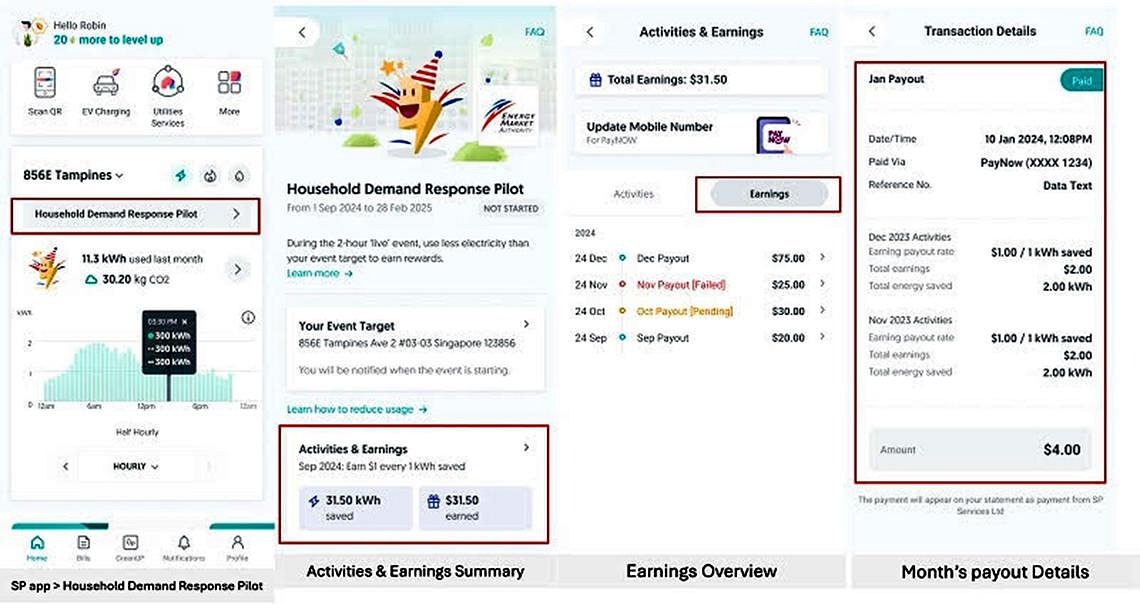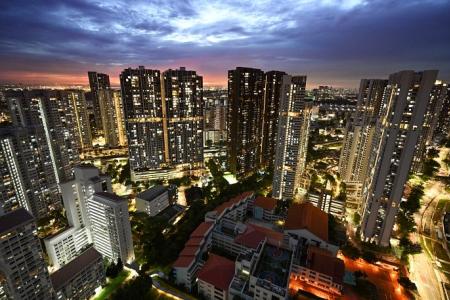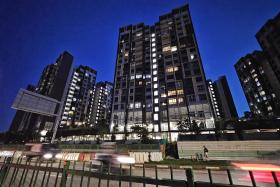Half of homes in EMA pilot cut energy usage in Sept when prompted
About half of the 1,000 households enrolled in a pilot programme to encourage less energy use during peak periods managed to cut their power consumption in September by at least 20 per cent from their typical usage levels.
These households received alerts on 15 occasions from utility operator SP Group’s app to temporarily cut down or defer their electricity usage.
Participants in the opt-in programme have to reduce their electricity consumption by at least 20 per cent from their typical usage levels during a “live event”, which is a two-hour period to mimic demand peaks, in order to receive cash rewards.
Households were not penalised for not responding to the prompts by postponing their use of high energy-consuming appliances or switching them off.
The Household Demand Response Pilot, rolled out in September by the Energy Market Authority (EMA) and SP Group, will end on Feb 28, 2025.
They did not reveal the amount of energy saved in September.

The pilot aims to encourage households equipped with smart meters to actively reduce their electricity usage during peak demand periods, relieving stress on the national grid during outages.
EMA said the pilot’s results will allow SP Group and it to assess the viability of tapping households for demand response programmes on a wider scale.
The authority told The Straits Times that since the pilot is still in its early stages, it is too early to determine its impact on energy consumption, and additional data will be available after the pilot ends.
EMA’s efforts to reduce peak period energy use include a demand response programme for businesses launched in 2016.
Such efforts are crucial as Singapore starts to incorporate different sources of energy into its energy mix in its bid to reduce its carbon footprint.
Solar energy, for instance, is intermittent due to weather conditions such as cloud cover, and imported electricity can be potentially variable based on availability, market conditions and transmission constraints.
According to EMA, the national grid’s peak demand is predicted to rise every year over the next five years, and demand response programmes will help keep the grid running smoothly and more efficiently.
Demand peaks in the power system refer to peaks in electricity consumption by consumers, which typically happen during the hotter months of the year, and when commercial and industrial activities are running at full speed in the afternoon.
The households in the pilot are equipped with smart electricity meters installed by SP Group.
In its annual report released in August, the utility operator said it has installed 900,000 smart electricity meters across residential and non-residential premises.
Consumers with smart meters, also known as advanced metering infrastructure meters, can view their half-hourly electricity usage on the SP app to track their consumption patterns and find ways to reduce their electricity usage.
Most households in Singapore currently use cumulative meters to track their electricity usage, with SP Group sending meter readers to these households once every two months to record their usage.
All 1.58 million household accounts in Singapore can expect to have smart meters installed at their premises by 2026, according to the Open Electricity Market website.
Get The New Paper on your phone with the free TNP app. Download from the Apple App Store or Google Play Store now


